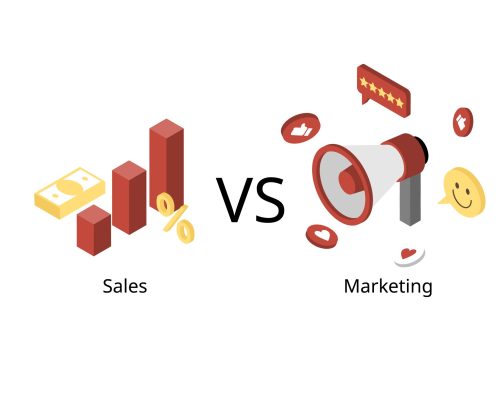Advertisement plays a crucial role in influencing consumer behavior by providing targeted information that impacts and persuades potential buyers.
The primary value of advertising lies in its ability to deliver relevant information about products or services, connecting the producer with the consumer.
While advertisements don’t directly improve the quality of a product, they communicate essential details about it, helping consumers make informed choices.
Companies focus on providing accurate and appealing information in their advertisements to guide consumers toward their offerings, even though some individuals may prefer to avoid detailed information when making decisions.
Advertisement plays a powerful role in shaping perceptions and creating brand awareness.
Whether through TV, newspapers, magazines, social media, or billboards, advertisements inform the public about new products and services, allowing consumers to assess the quality and benefits of those items.
Understanding Consumer Behaviour in Advertisement
 Consumer behavior refers to the mental processes individuals go through when deciding to purchase and use products or services.
Consumer behavior refers to the mental processes individuals go through when deciding to purchase and use products or services.
This includes what they buy, why they buy it, how often they buy it, and what factors influence their decisions.
Understanding consumer habits is vital for businesses to design effective marketing strategies.
By comprehending customer behavior, companies can create advertisements that resonate with their audience and build stronger relationships between brands and consumers.
For businesses and sellers, advertisement is not just about reaching the masses; it’s a strategic way to differentiate their products in a crowded market.
Effective advertisements attract potential buyers by showcasing the advantages of a product, ultimately increasing demand. This mutually beneficial relationship between marketers and consumers leads to better-informed buying decisions and helps companies achieve their sales goals.
Through consistent and clear communication, advertising serves as the link between product creators and consumers, ensuring both parties benefit from the exchange.
The Influence of Advertisements on Consumer Decision Making
 Advertisements play a pivotal role in influencing consumer decision-making.
Advertisements play a pivotal role in influencing consumer decision-making.
They shape perceptions, create desires, and can have a profound effect on purchasing behavior.
Let’s explore how advertisements work and why they are so powerful in guiding consumer choices.
1. Creating Awareness: Advertisements are often the first point of contact between consumers and new products or services. Whether it’s a new smartphone, clothing brand, or food item, advertisements ensure that consumers become aware of these offerings.
Beyond introducing new products, advertisements also remind consumers of brands or products that they may have forgotten. This helps to keep the brand fresh in consumers’ minds, ensuring they consider it when making future purchases.
2. Providing Information: A well-crafted advertisement not only showcases a product but also highlights its unique features and benefits. This helps to differentiate it from competitors. For example, a car ad might focus on safety features, while a skincare product might emphasize natural ingredients.
Advertisements can also address potential concerns or questions that consumers may have. For instance, an ad for a new tech gadget may explain how it’s easy to use, or a new cleaning product might highlight its eco-friendly formula to appeal to environmentally conscious consumers.
3. Persuasion: One of the most powerful tools in advertising is emotional appeal. Advertisements often connect with consumers on a personal level, whether by evoking feelings of happiness, nostalgia, or even fear.
For instance, a heartwarming ad about family might inspire consumers to buy a product that aligns with family values.
It frequently showcases how others are enjoying or benefiting from a product, providing social validation. This type of “social proof” can make consumers feel more confident in their purchasing decisions, as they see others who are satisfied with the product.
Also creating a sense of scarcity or urgency can push consumers to make quick decisions. For example, phrases like “limited time offer” or “only a few left” tap into the fear of missing out, driving consumers to act fast before the opportunity passes.
4. Shaping Perceptions: Advertisements are essential in building and maintaining a brand’s image. They help consumers associate a brand with certain values, qualities, or lifestyles. For example, luxury brands often use advertisements to promote a sense of exclusivity and elegance, while sports brands might focus on performance and durability.
Through it, companies position their products to competitors. They highlight the product’s unique selling points, such as better quality, lower price, or superior performance, helping consumers understand why they should choose that product over others.
5. Influencing Purchase Behavior: By showcasing the benefits of a product and appealing to consumers’ wants and needs, advertisements can create a strong desire.
For example, a beautifully shot ad for a tropical vacation can stir a longing for relaxation and adventure, encouraging consumers to book a trip.
Advertisements often include special promotions or incentives, such as discounts or free trials, to encourage consumers to try a product for the first time. These offers can help reduce hesitation and make consumers more likely to give the product a chance.
Consistent advertising helps reinforce brand loyalty. When consumers frequently see ads from a brand they already trust, they are reminded of their positive experiences, which encourages repeat purchases.
Trends in Advertisement & Consumer Behaviour
 The world of advertising and consumer behavior is constantly changing, driven by new technologies, shifting consumer preferences, and evolving business strategies.
The world of advertising and consumer behavior is constantly changing, driven by new technologies, shifting consumer preferences, and evolving business strategies.
Below, we explore some of the key trends shaping both advertising and consumer behavior today.
Advertising Trends
1. Digital Advertising: With the rise of the internet, digital advertising has exploded. This includes everything from search engine marketing, where businesses pay for their websites to appear in search results, to social media advertising on platforms like Facebook, Instagram, and Twitter.
Digital advertising allows businesses to target specific audiences and measure their campaigns’ effectiveness more precisely than traditional methods.
2. Content Marketing: Rather than just promoting products through ads, businesses are increasingly focused on creating valuable content that informs, entertains, or solves problems for consumers.
This approach helps to build trust with audiences and create long-term relationships. For example, a tech company might write helpful blogs about how to troubleshoot common device issues, attracting readers who may then become customers.
3. Video Advertising: Video content has taken the world by storm. Platforms like YouTube, TikTok, and Instagram Reels are creating new ways for businesses to advertise using video.
Whether it’s a quick tutorial, a product demo, or an entertaining brand story, videos capture attention and leave a lasting impression.
4. Influencer Marketing: Collaborating with influencers, and individuals who have a large following on social media has become a popular strategy for brands. Influencers are trusted by their audience, and when they recommend a product, it feels more authentic than traditional advertising.
The endorsement from a relatable figure can build credibility and encourage purchases.
5. Personalized Advertising: Thanks to advances in data collection and technology, businesses can now create highly personalized ads that cater to individual consumers.
By analyzing consumers’ online behavior, preferences, and past purchases, advertisers can deliver tailored messages that feel more relevant.
6. Ethical Advertising: Ethical advertising also means considering the broader impact of campaigns, such as avoiding harmful stereotypes or being truthful about product claims.
Consumers are increasingly demanding transparency and honesty from brands, leading to a rise in ethical advertising. Businesses are now focusing on responsible targeting and clear messaging, avoiding deceptive practices.
Consumer Behavior Trends
1. Mobile-First Behavior: Consumers are increasingly using their smartphones and tablets for everything, from browsing the web to making purchases. This shift means that businesses must prioritize mobile-friendly advertising to ensure their messages reach consumers effectively.
2. The Power of Social Media: Social media platforms like Instagram, Facebook, and TikTok have a profound influence on consumer behavior. People look to social media for product recommendations, reviews, and even direct shopping options.
Brands that actively engage on social platforms can build strong relationships with their audience, influence buying decisions, and enhance their overall image.
3. Value-Driven Consumption: Consumers today are more conscious of social and environmental issues, and many prefer to support brands that align with their values.
Whether it’s a commitment to sustainability, fair trade, or social justice, consumers are paying attention to what a brand stands for. This shift towards value-driven consumption is reshaping how businesses communicate and market their products.
4. Experience Over Products: More and more consumers are seeking experiences rather than just products. This trend has led to the rise of experiential marketing, where brands create memorable, interactive experiences for consumers.
For instance, a clothing brand might host a pop-up event where shoppers can try on outfits while enjoying live music and refreshments.
5. The Growth of E-commerce: Online shopping continues to grow rapidly, and consumers now expect businesses to have a strong online presence.
The convenience of shopping from home, the ability to compare prices instantly, and the ease of delivery are all factors driving e-commerce growth. Businesses that adapt to this digital shift are well-positioned to thrive in the competitive marketplace.
6. Data Privacy Concerns: As consumers become more aware of how their personal information is being used, concerns about data privacy are on the rise.
People want more control over their data and how it’s shared with advertisers. Businesses need to be transparent about their data practices and respect consumers’ privacy by adhering to strict regulations. Failure to do so can damage a brand’s reputation and lead to loss of trust.
Advertisements are more than just promotional tools; they shape our culture, influence our emotions, and guide our behavior. From clever social media ads to heartwarming TV commercials, brands have mastered the art of capturing our attention and driving our decisions.
As consumers, it’s crucial to be aware of the influence ads have on us. Understanding how and why advertisements affect our behavior can make us more informed and intentional in our purchasing decisions.
Read Also: 3 Effective Influencer Marketing Strategies Every Business Needs


